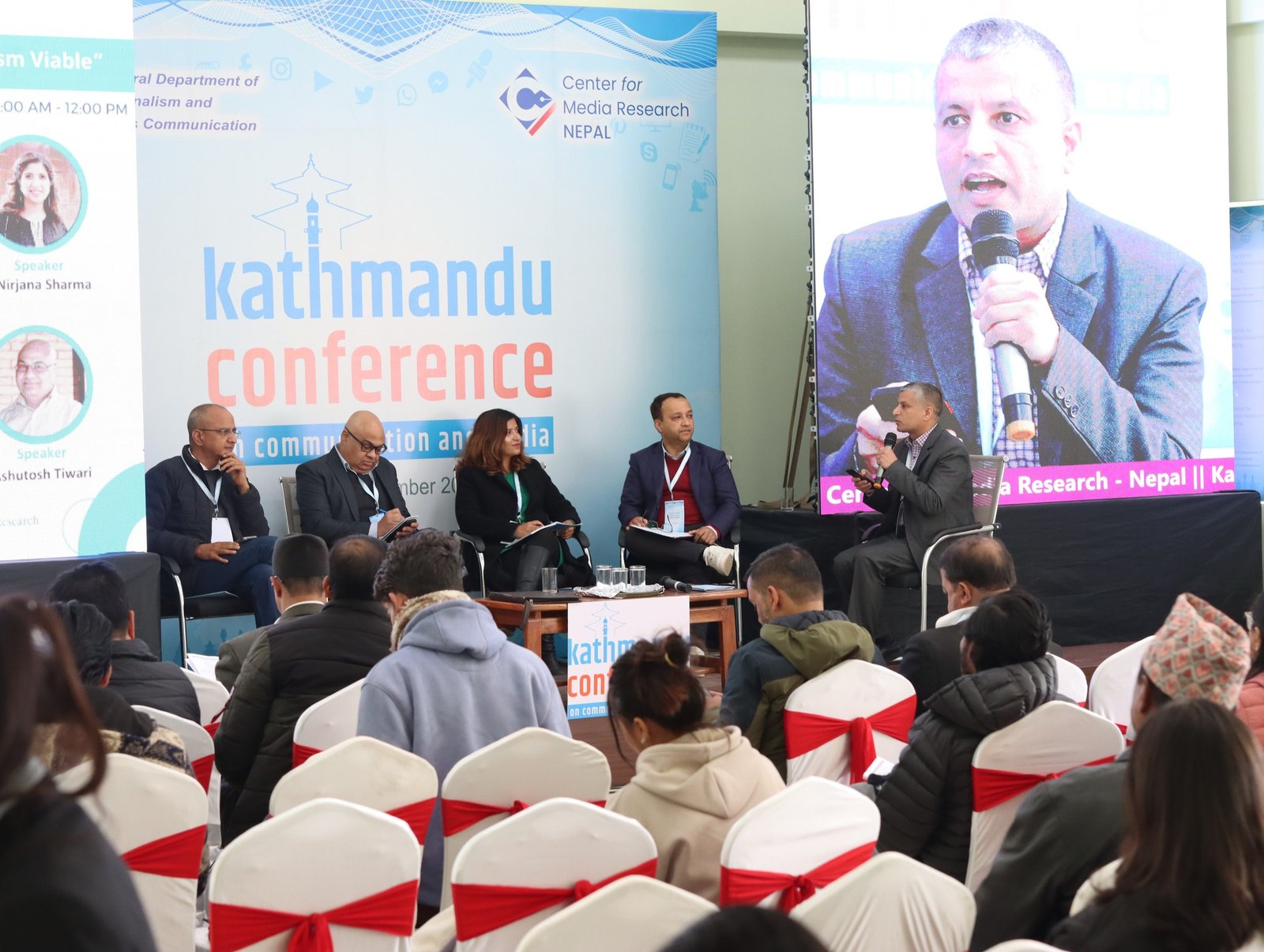On December 23, 2024, the Center for Media Research – Nepal (CMR-Nepal) organized a panel discussion on “Making Journalism Viable” during the Kathmandu Conference on Communication and Media in Kathmandu. Here is the summary report.
Moderator: Tilak Pathak
Panelists: Ajay Das (The Asia Foundation), Nirjana Sharma (UNESCO Kathmandu), Ameet Dhakal (editor, Setopati) and Ashutosh Tiwari (business development expert)
Panel Summary
The conference’s third panel, “Making Journalism Viable,” addressed the financial viability of journalism in the contemporary landscape. The panelists discussed the difficulties media outlets confront in generating revenue and staying independent while producing high-quality journalism. The conversation focused on the necessity of specialized reporting, innovative financial structures, and regulatory changes to guarantee journalism’s long-term survival.
The panel discussed the importance of revenue generation and corporate advertising for media organizations, suggesting the implementation of laws to regulate advertising practices and maintain editorial independence. They also emphasized the need for clear financial health indicators to identify areas for improvement in revenue generation and maintain ethical standards. Additionally, they advocated for specialized reporting and subscription-based models to diversify revenue streams and attract dedicated audiences. The panel also stressed the importance of rigorous content analysis and quality assurance, including fact-checking, ethical reporting, and meeting the highest journalistic standards, to maintain credibility and relevance in media.
Panel Recommendations
The Making Journalism Viable panel recommended:
- Regulating corporate advertising practices
- Developing media viability indicators
- Promoting subscription-based models
- Investing in content quality and assurance
- Encouraging innovation in business models
These measures will help media organizations maintain ethical standards and achieve financial sustainability without undermining journalistic independence. The panel also emphasized the importance of content analysis and quality assurance for maintaining credibility and public trust.
Individual Panelist Speeches
Ameet Dhakal: “Let me talk about my experience and the difficulties the media sector faces. One of the main problems is that media companies depend largely on advertising for 90% of their revenue, which leads to a conflict of interest that frequently erodes audience loyalty. For example, because of its low cost, Indian media has had a significant impact in Nepal. The profitability of color printing and the sustainability of publishers were seriously called into question when a newspaper in Nepal was sold for Rs. 5 but the publisher only received Rs. 3.
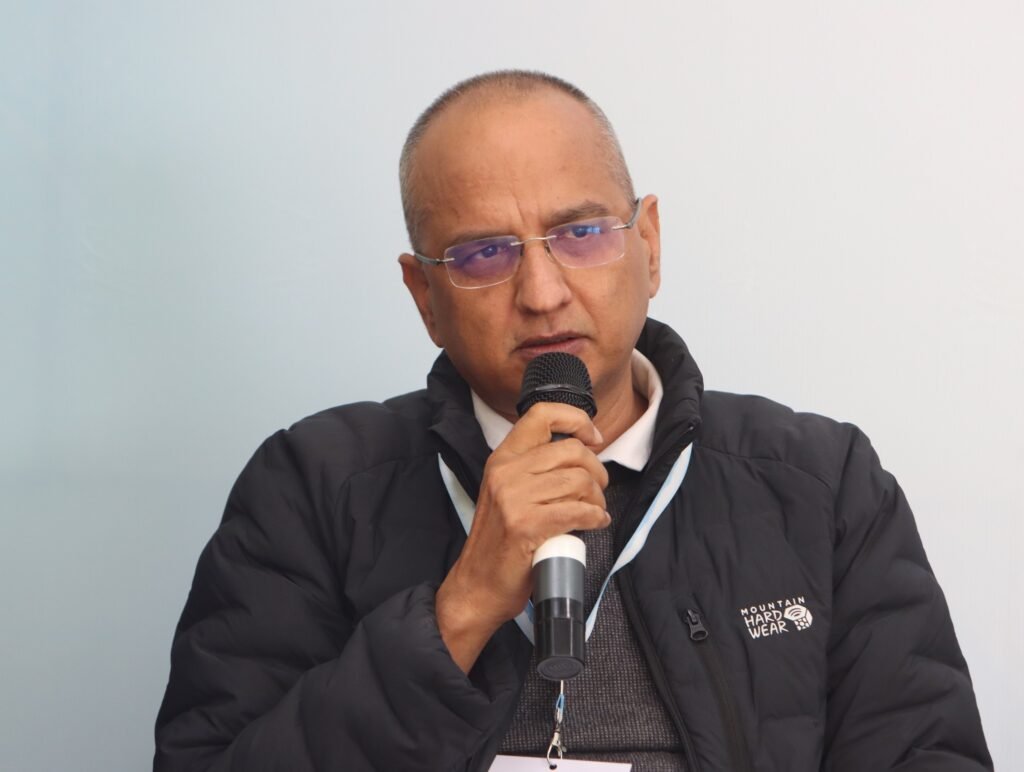
We discuss subscription models and corporate governance. For instance, The New York Times has effectively transitioned to a subscription-based business model, guaranteeing both financial stability and exceptional reporting. As a journalist, I always felt that I could operate autonomously, and I had the opportunity to invest more in the media. However, the harsh reality of being a publisher is that you must pay your bills at the end of each month.
It must be up to the readers to decide what they wish to read. The pay structure and the criticism publishers receive, however, are the issues. We must review and amend current legislation in order to make the media autonomous and viable. To establish a sustainable solution, the problems with these laws need to be carefully examined.
We have a misunderstanding between private and social work. Tax money is being paid by someone; everyone should contribute as we are valuable. Everyone contributes to advertising, but few people read or share critical and opinion pieces. There is a smaller critical mass of decision-makers and policymakers. We have been trying to use the subscription model as a psychological transition from free to paid content.”
Ajay Das: “The Vibrant Information Barometer study highlights important concepts that influence our media landscape and offers insightful information about how information is consumed and transformed. In terms of media vitality, Nepal receives a score of 23 out of 40, which suggests that there is room for improvement. Lumbini receives a score of 24 out of 40 when considering regional gaps, while Madhesh receives a score of 22 out of 40.
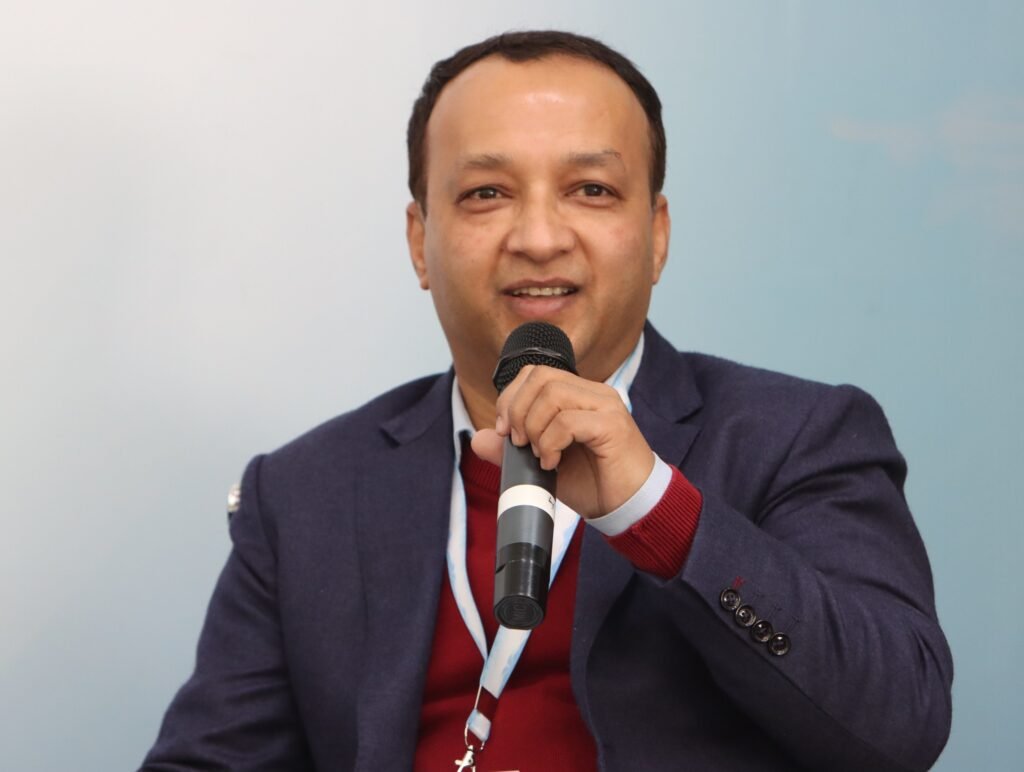
While important subjects like climate change and other socioeconomic issues receive less coverage in Nepali media, political matters are frequently the main focus. Furthermore, underrepresented voices—such as those speaking Bhojpuri, Maithili, and other regional languages—are frequently ignored. These problems are exacerbated by financial difficulties, which impact all media outlets.
Online media, however, has become a powerful instrument that unites people and provides a forum for a range of viewpoints. Although this is a step in the right direction, we still need to address the inequalities and guarantee that all groups, irrespective of language or location, have equal access to representation and information. Only then can we establish a truly dynamic and inclusive media environment.
People who are new to journalism should enter the field. The number of media enthusiasts is declining in the new era of journalism. Quality, inclusive newsrooms and diversified content must be the foundation for good journalism.”
Nirjana Sharma: “Global surveys have revealed a dramatic change in advertising patterns since COVID-19, with 50% of advertisements being directed toward the internet and only 6% going to other traditional media channels. This emphasizes how digital platforms are becoming increasingly dominant, but it also highlights how much more research is needed to fully comprehend the ramifications of this shift.
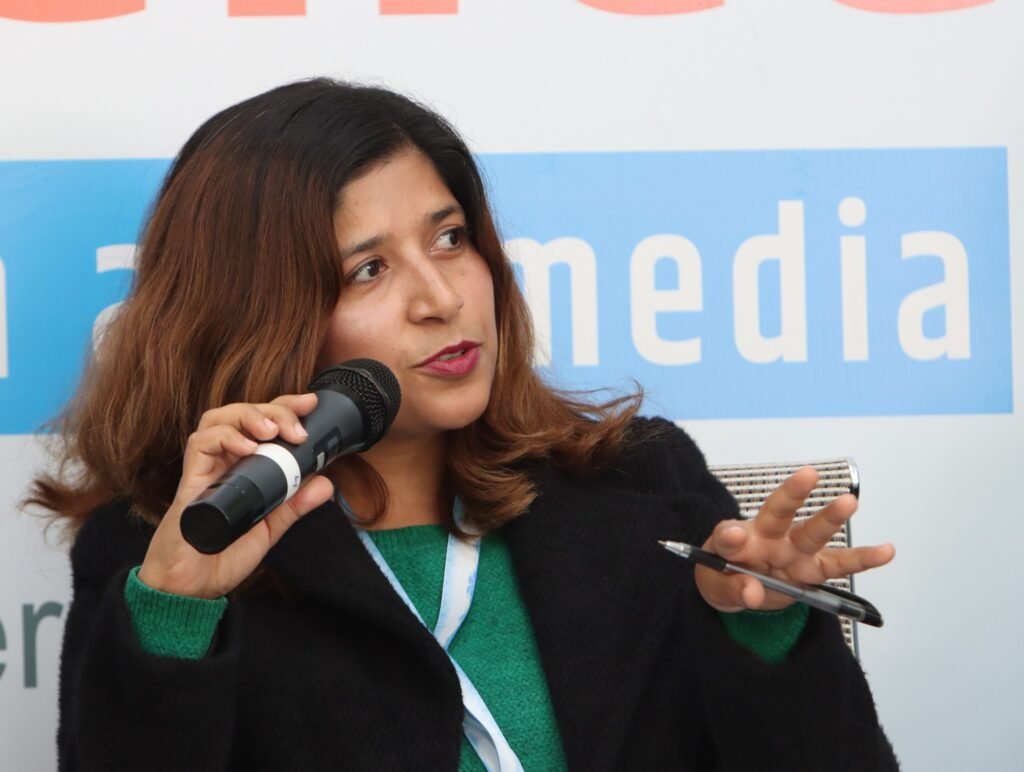
We must use UNESCO’s media viability indicators to evaluate the state of our media ecosystems in the context of media viability, especially in Bangladesh, India, and Nepal. To effectively handle issues, we must, however, set aside generalizations and focus on details at the individual level. In order to guarantee diversity and equity, we also need to examine media from a variety of perspectives, including feminist and legal viewpoints.
By 2025, we should strive to establish a media environment that not only endures but flourishes, meeting the particular requirements of each stakeholder and advancing equity and sustainability.
The audience and the media are not in sync. People are creating false narratives because the media isn’t regarded as reliable. Misinformation should be addressed by the media. We are working with young people based on their consumption and content creation, but they are not welcomed in the media industry. As content creators gain prominence and work as competitors to traditional media, both journalists and creators should be retained and collaborate with mutual understanding and respect.”
Ashutosh Tiwari: “The media must be viewed as a business. We will lose money if we don’t compete in the media sector. For the media to survive and prosper, it must be profitable. Health and education were once considered purely social services, but the media industry needs to function differently; it must be profitable, competitive, and viable.

There is a concept known as the “economics of superstars” in the media economic model, which holds that a small number of powerful companies retain the majority of the profits. One of the best examples of this phenomenon is The New York Times—a media outlet that has dominated the market and satisfied its audience. In Nepal, this leaves a void in which two to three other media organizations find it difficult to compete.
Superstar economics extends beyond media to include sports, entertainment, and content production. Media must prioritize high-quality content, subscriptions, and creative revenue sources in order to be sustainable. We must use our creativity to organize events, produce engaging content, and prioritize quality because the advertising business has slowed down. If the journalism is strong, a two-line headline might be sufficient.
We should focus on producing high-quality journalism since it is in high demand. Although journalists and media owners frequently argue philosophically about the role of the media, the truth is that media products need to be robust in order to thrive. Since owners don’t have unlimited resources, we must rely on events, subscriptions, and high-quality content to maintain viability.
Similar to journalism, business models have expanded. Media should be made feasible based on multiple revenue streams and diverse approaches, not just in one area but also through the utilization of various media outlets and platforms.”
Question and Answer Session
Questions Asked
Raviraj Baral (Media Kurakani): “How is media viability ensured when it relies heavily on advertising, following the 80-20% model?”
Unknown Participant: “How does mainstream media balance its role as a service to the audience versus being market-driven? How should social media and convergence media adapt to these changes?”
Umesh Pokhrel (Media Student): “What are some alternative business models that media can adopt beyond the traditional advertising-based model? For example, what can conclave media or other innovative approaches offer?”

Panelist Responses
Ameet Dhakal’s Reply
“Although content has always been essential, the focus now shifts from the institution to the individual. All genders and voices are now represented by individual content creators, who are both king and queen of their domains. When your content is so compelling that no one can argue against it based on its value or the issues it addresses, you have truly succeeded.
Only large media outlets used to be able to publish and reach audiences. However, the landscape has drastically changed in the modern era. Anyone can reach a large audience by publishing content on blogs, social media, and other platforms. Although the democratization of media has leveled the playing field, content quality and credibility are now more important than ever.
As media practitioners, we need to adapt to this change by focusing on producing content that is reliable, relevant, and impactful. Standing out in a crowded field with content that connects and sparks meaningful conversations is now more challenging than gaining access to platforms.”
Ashutosh Tiwari’s Reply
“These days, our own media students and individual experts are conducting research, particularly market research, in addition to major institutions. This shift emphasizes how crucial research is becoming as a means of understanding markets, audiences, and trends. With a wide range of applications across industries, research has grown to be a substantial business in and of itself.
The emergence of digital platforms has democratized access to research. Resources such as online databases, newsletters, and collaborative platforms facilitate the broad dissemination of ideas and discoveries by both individuals and organizations. Because of this accessibility, media professionals and students are now able to make significant contributions to the sector, encouraging innovation and informed decision-making.”
Nirjana Sharma’s Reply
“We’ve examined media economics and business models from a variety of interesting perspectives during this conference. It is evident that the media landscape is changing rapidly, and in order to adapt and thrive, we must continue having these conversations. To move forward, we must focus on making genuine connections with our audiences and ensuring that the media continues to serve as a forum for accountability, truth, and public service.
To handle opportunities and challenges, the media must engage with a variety of stakeholders in addition to press councils and civil society. We require media-focused conversations that prioritize sustainability, innovation, and ethical behavior.”
Ajay Das’s Reply
“We have focused on issues that have a significant impact on media sustainability, particularly in the post-truth era where individual opinions and preferences frequently trump facts. People today are more likely to seek information that supports their opinions, which creates a gap between traditional media and its role of reporting in a fair and accurate manner.
This shift raises important questions about the media’s future. What will happen to the media industry’s sustainability, diversity, and credibility if the younger generation no longer participates in or enters the field? This perspective requires careful consideration. The media runs the risk of becoming stagnant and outdated without new ideas and talent. Making media more appealing and accessible to younger generations is one way to address this challenge.”
Moderator’s Remarks
Moderator Tilak Pathak began the conference by introducing the panelists and setting the stage for a thorough discussion. He started by inquiring about the obstacles and challenges of media viability in Nepal, emphasizing financial sustainability and technological advancements. He asked, “How have media challenges evolved until now?” and cited the Asia Foundation’s report on Nepal’s media vibrancy.
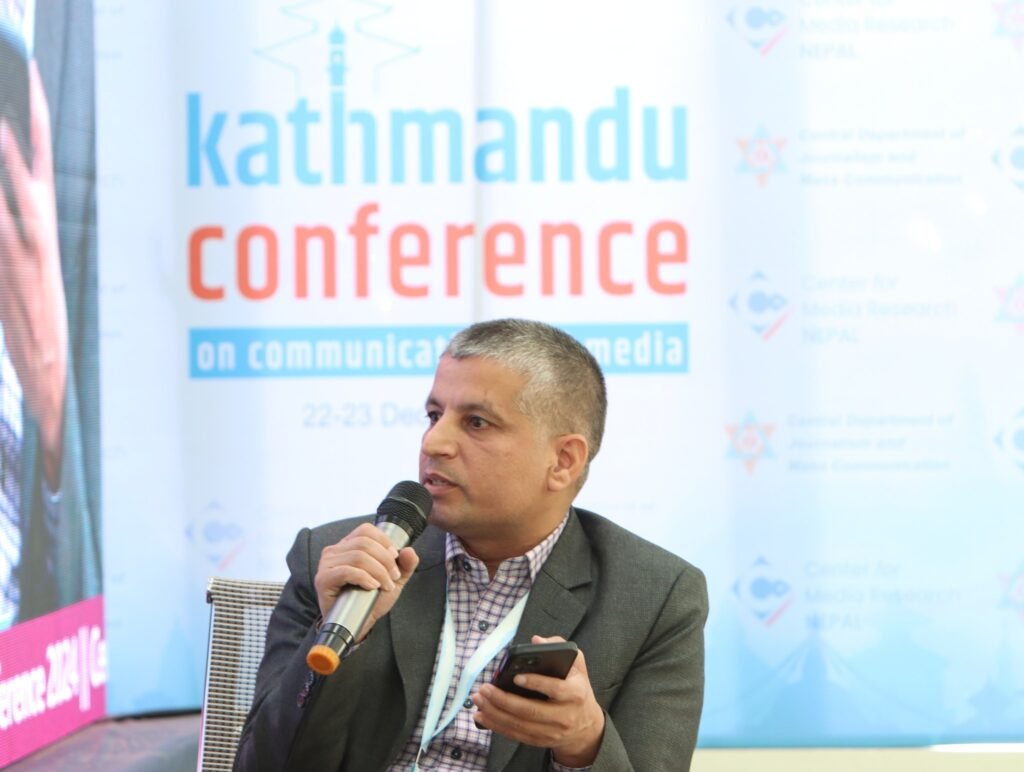
He also questioned UNESCO’s role in media viability and how media entrepreneurship has influenced vibrancy. He expressed concern about the viability of specialist reporting under subscription arrangements, questioning, “Is this model sustainable?” He also highlighted how to regain media trust and the role of civil society in fostering it. Each panelist shared their insights and concluded by summarizing their key points, capping off an engaging discussion.
